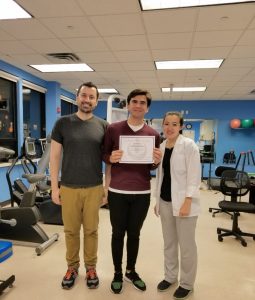Do you truly need to know anything about osteoarthritis? By the end of today’s reading, I want you to be aware of two things. First, it’s important to understand what osteoarthritis is, and it’s equally important to recognize what happens when it’s not treated.
To answer the opening question, the answer is yes. According to the CDC, roughly 78 million American adults, aged 18 and older, will receive an arthritic diagnosis by 2040.
On the high end, the figure is 91 million Americans. Between ages 18 and 64, 1 in 3 will have arthritis. Guess which form of arthritis is one of the most common?
Did you guess osteoarthritis? If so, you’re correct. Okay, so what? Why should any of us care?
Most common activities limited by arthritis
- Kneeling or bending over
- Reaching above one’s head
- Grasping objects
- Cooking, cutting meat and vegetables
- Washing dishes, pots and pans
- Lifting items above 10lbs
- Sitting or standing for 2 hours
- Walking beyond a short period of time
- Walking up a flight of stairs
Although we can add more, let’s apply these actions to daily activities. How about going to a play? How about sitting down to watch movies at home? What about working in an office environment? What about having family dinners during the holidays?
Regardless of the real-world activity, an arthritic diagnosis can negatively influence our daily lives.
With that in mind, what is osteoarthritis? At the ends of our bones, in a joint, we have protective tissue called cartilage. To stop the bones from rubbing together, cartilage is our defense.
With osteoarthritis, the disease breaks down cartilage. The more damage we sustain in our joints, the greater the pain and stiffness we’ll experience. How so? Because osteoarthritis is a degenerative disease, think of this protective layer of tissue wearing away over time. Unfortunately, cartilage can wear away entirely.
As we move about, our bones will rub against one another. Although osteoarthritis becomes more prevalent with age, trauma can lead to early-onset osteoarthritis.
For instance, whenever younger individuals experience stress fractures through sporting activities and the like, the fractures can lead to early-onset osteoarthritis.
Common causes of osteoarthritis
- Stress on joints from consistent sporting activities
- Work related stress on joints
- Aging
- Genetic (family history of the disease)
- After age 55, women are more likely than men of the same age
- Being overweight
- Metabolic disorders like hemochromatosis
- Being Sedentary, not exercising
By ignoring these causes, and by minimizing the extent of our symptoms, we’ll exacerbate the painful effects. So, what do you do? First, your doctor will perform a physical examination to check affected joints for elements like mobility, swelling, redness, etc.
Through blood tests, joint fluid analysis, X-rays, and an MRI, the results will make a determination. If the results confirm osteoarthritis, then what? At this point, your doctor may prescribe medication to mitigate the pain, refer you to Physical or Occupational Therapy to treat the arthritis conservatively to alleviate the symptoms, and possibly recommend surgical procedures.
So, how can I assist? Occupational therapy can help you manage your pain or even relieve your symptoms, so that you’ll be able to perform your daily routine task such as preparing and cooking your family dinner, washing dishes, grasping items or holding your cup of coffee. Having Osteoarthritis doesn’t mean you are going to live with pain for the rest of your life. We can help you live pain free by using different treatment strategies and modalities, to mobilize the joint, tendons and muscles, to strengthen them and minimize inflammation. The earlier I address your symptoms, it becomes easier to do the following: manage osteoarthritis, and improve quality of life. Also remember, there are some ingredients at home that you can take to help you. Garlic, celery and lemon are natural anti-inflammatories.
At Occupational Therapy Concept, You’re Family. For a Free consultation, give me a call at (718) 285-0884 for further evaluation, and let me help with your arthritic diagnosis.



